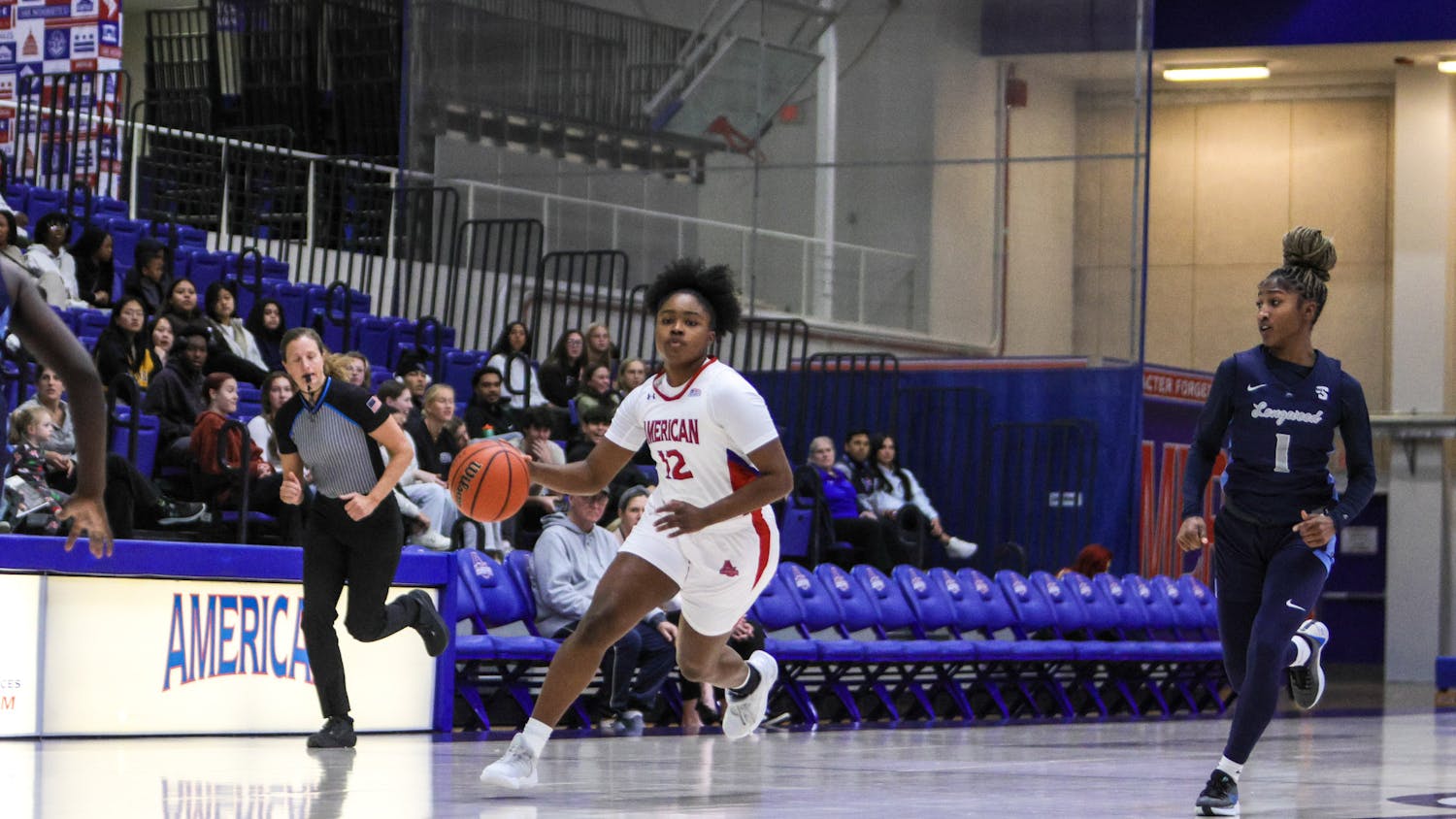Editor's Note: This article appeared in The Eagle's October 2020 virtual print edition.
Before the coronavirus pandemic dominated our lives, people commonly spent a weekend afternoon roaming around an art exhibit. There is much to see and experience for general audiences at an art exhibit, from paintings to installations, sculptures to photographs.
Museums don’t create themselves, however. The projects are carefully calculated by professionals known as art curators.
Since the AU Museum at Katzen Arts Center opened in 2005, Jack Rasmussen, the museum’s director and curator, has played an important role in how the museum works with the AU community. He said that Katzen was built as a focal point for AU’s campus.
“Our programs were really more directed towards Washington, D.C., and over the past several years, we've been trying to get more and more corporated into the life of the campus, the academic life,” Rasmussen said.
As a very politically-active university, Rasmussen curates shows that reflect on ideas of identity, social justice and politics. Rasmussen says other museums might be hesitant to show exhibits like this because they court controversy, but the AU community is very receptive and supportive of these debatable shows.
Though Rasmussen is the only official curator at AU’s museum, he often brings in guest curators to highlight different art experiences. The goal of curators and museums, Rasmussen said, should be to recontextualize history, preserve artwork and change culture.
Jordan Amirkhani, a modern and contemporary art history professorial lecturer, said that art galleries do a good job of “hiding the labor that goes into the construction and organization of an exhibition.”
“It's supposed to look effortless, and that's because curators are responsible for communicating a very clear visual experience for a viewer, for an audience member, for a museum-goer,” Amirkhani said.
Amirkhani also works as an independent art curator, focusing on living artists, especially female artists of color and female artists in general. She is curating an exhibit for the Atlanta Biennial at the Atlanta Contemporary Art Center, which will debut in February 2021.
“The word curator comes from the Latin ‘to care,’ and that is something that I think about a lot in my own work, that you are, in a way, a kind of caretaker or steward of artwork and art objects in an art institution,” Amirkhani said.
Amirkhani and the Atlanta Contemporary Art Center thought they might have to cancel the Altana Biennial. Once they decided not to cancel it, she said it was still difficult to curate the exhibit. Armirkhani used Zoom and FaceTime to see the artists’ pieces that would be in her collection.
“So much of being a curator is being in artists’ studios and seeing work in-person, in real-time,” Amirkhani said. “And, that opportunity was taken [away] from me, and it was really difficult to put together a show with the absence of being able to be in Atlanta.”
Rasmussen also adapted by moving his most recent exhibits online, including the series entitled “Contested Space.” Every presidential election cycle, Rasmussen presents exhibits that address some of the most prominent issues leading up to the election.
Photographer Edward Burtynsky’s “Water,” a series that took five years to complete, features in the exhibit. It captures humans’ relationship with water, including in Canada, Iceland and India.
According to AU’s website, “Water” was previously “curated by Russell Lord, Freeman Family Curator of Photographs, for the New Orleans Museum of Art in 2013.”
“You can get drawn down into just the minute level, and it just holds together all the way down to the almost microscopic. It’s an incredible experience to see these in person,” Rasmussen said about Burtynsky’s series.
Burtynsky echoed Rasmussen’s thoughts about his work, saying the online format is not ideal for viewing his photographs.
“It's not the experience that you want. You want to stand in front of these prints,” Burtynsky said. “You can go in and put your face six inches away from the picture, and it doesn't fall apart. Everything that is still there, it's readable as information.”
Both Rasmussen and Amirkhani are adjusting to these different times while engaging with topics on identity and contested issues leading up to the election.
“It has to be relevant to what's going on in the world,” Rasmussen said. “Sometimes, that's the job of the curator for the museum is to provide the context in which you can understand what you're seeing in terms of today.”





